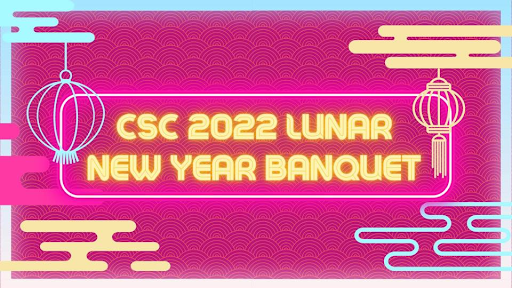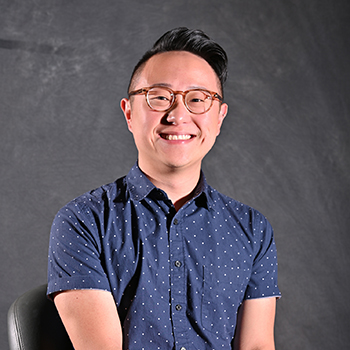Lunar New Year is a multicultural celebration
February 1, 2022 - Jeffrey Tsang
Q&A with Jeffrey Tsang on the spring festival
Jeffrey Tsang is an Academic Specialist in the College of Engineering where he is the recipient of the 2021 Withrow Student Service Award. He is also a first-year Ph.D. Student in the Higher, Adult and Lifelong Education program in the College of Education. Tsang advises three student organizations at Michigan State University and provides leadership for two Asian Pacific Islander organizations, including the Asian Pacific Islander Desi American/Asian Faculty Staff Association.
Who celebrates Lunar New Year? Can you tell us about the different groups of people who observe the celebration?
Lunar New Year starts on Tuesday, February 1, 2022, and is celebrated in many places in Asia, including but not limited to China, Hong Kong, Korea, Malaysia, Mongolia, Okinawa, Singapore, Taiwan, Tibet and Vietnam. The celebration marks the beginning of the lunar calendar. We say Lunar New Year because we need to be inclusive of all the communities that celebrate the new year.
Some of the many communities that celebrate Lunar New Year:
Chinese New Year (農曆新年/农历新年/春节)
Korean New Year (설날/Seollal)
Mongolian New Year (Tsagaan Sar)
Tibetan New Year (ལོ་གསར་ Losar)
Vietnamese New Year (Tết nguyên Đán or Tết)
What are some of the ways it is celebrated or practiced?
Every culture has its own traditions. Growing up in Hong Kong, my family and I celebrated Lunar New Year with a lot of family time and food. A common practice in my culture was that we had to clean and decorate the house before the first day of the Lunar New Year. Our family would put up new red and gold banners and couplets with messages of good fortune, good health and good luck. We would always get a big mandarin tree to welcome wealth, luck, and prosperity and a peach blossom tree to signify spring, renewal and new beginnings.
It was a tradition to visit your relatives during the first few weeks of the new year. Exchanging gifts and new year greetings is a common practice. Typically your elders would give red envelopes with money in them as a sign of good luck and prosperity. Firecrackers, fireworks and lion dances are also part of the celebrations to bring in the new and to ward off bad spirits.
Food is a central part of my family’s celebration. Lots of food we eat has meaning and it tends to derive from homonyms. We eat a whole fish for prosperity and always have a surplus. Dumplings and spring rolls for wealth. Glutinous rice cakes (年糕) symbolizing attaining new heights. Sweet rice balls (湯圓) associated with reunion and family togetherness. Noodles for longevity. Fruits such as pomelo, tangerines, and oranges symbolize success and achievement. A staple in my household is a candy box (全盒) with 6-8 compartments with dried candies fruits, seeds, and nuts. The fortune candies symbolize wealth, happiness, and luck.
Vietnamese people celebrate Tết by making and eating bánh chưng and bánh tét - sticky rice cakes filled with mung bean and pork. The sweet or savory cakes are wrapped in dong leaves or banana leaves as a substitute and symbolize humility and resourcefulness. Bánh chưng are square in shape representing the earth and bánh tét are cylindrical representing the sky.
Koreans celebrate Seollal by making and eating tteokguk or 떡국 - a rice cake soup with julienned eggs, seaweed, meat and sesame oil. The white tteok or rice cake signifying purity and cleanliness have been eaten during that specific day and it became a ritual to start off the New Year for good fortune. The oval-shaped sliced rice cakes resemble coins, which symbolizes prosperity.
These are just some of the many traditions that our communities practice and there are many more.
How has the Asian diaspora influenced how it is celebrated? Has it evolved?
Lunar New Year is typically celebrated over multiple days. Chinese New Year is celebrated over 15 days, Tết is celebrated over a week and Seollal is celebrated over three days. There is also a reevaluation of traditions, western countries have not been built to accommodate most traditional celebrations. For example, in Hong Kong, everything would be closed during the new year for 10-15 days to give people time to celebrate and spend time with their families.
In the United States, celebrations are usually condensed into a weekend or a day or two because people are not able to take extended time off. For me, Lunar New Year has become a multicultural celebration. My friends and I bring in our own family traditions and make new multiethnic traditions. Lunar New Year is an opportunity for us to honor our ancestors, express gratitude for the abundance we have been given, and bring in the new year with family and friends.

On Feb. 1, 7:00 - 9:00 p.m. ET, the MSU Vietnamese Student Association will host an in-person Lunar New Year event in the Vincent Chin Heritage Room in Holden Hall. To learn more about the event visit the Facebook event page.

On Feb. 26, 6:00 - 8:00 p.m. ET the Chinese-American Student Coalition will host an in-person Lunar New Year Banquet in the Cadillac Room in Lansing. Tickets are required. Facebook event page.


